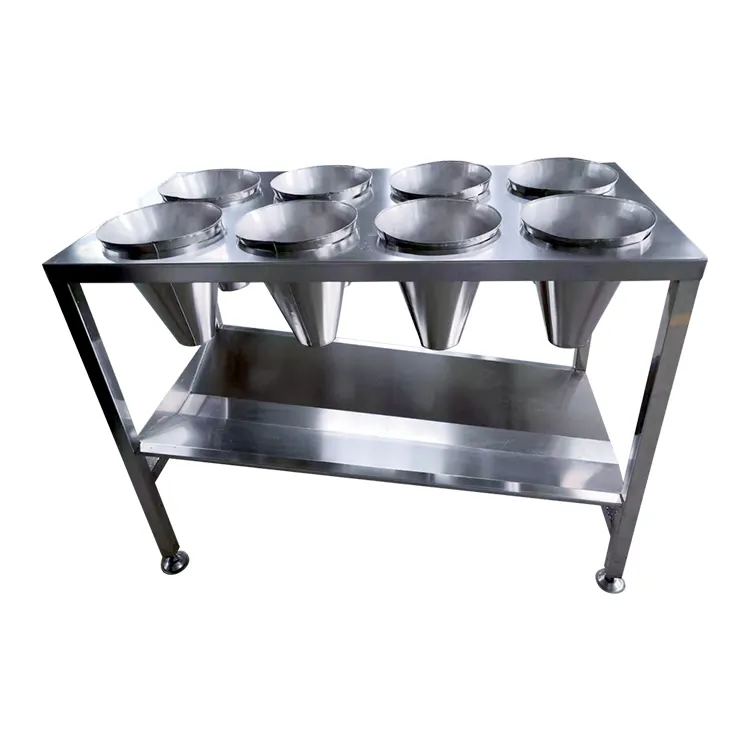Effective Vacuum Machines for Preserving Freshness in Food Packaging Solutions
Nov . 19, 2024 17:00 Back to list
Effective Vacuum Machines for Preserving Freshness in Food Packaging Solutions
The Significance of Vacuum Machines in Food Packaging
In the world of food preservation, vacuum packaging has emerged as a revolutionary technique that significantly increases shelf life and maintains the freshness of various food products. At the heart of this process lies the vacuum machine for food packaging, an innovative solution designed to remove air from the packaging, thereby inhibiting the growth of bacteria and other microorganisms that can lead to spoilage.
How Vacuum Packaging Works
The principle of vacuum packaging is relatively straightforward. A vacuum machine removes air from a sealed packaging environment, creating a vacuum that slows down the oxidation process. This not only preserves the food's flavor and texture but also prevents freezer burn when food is stored in freezers for extended periods. In commercial settings, vacuum packaging is widely utilized to pack a variety of food items, from meat and poultry to fruits, vegetables, cheese, and more.
Benefits of Vacuum Packaging
1. Extended Shelf Life One of the most significant advantages of vacuum packaging is the extension of the food’s shelf life. By minimizing the amount of oxygen that comes into contact with the food, the growth of aerobic bacteria and mold is inhibited, allowing perishable items to last significantly longer.
2. Preservation of Nutritional Value Vacuum packaging helps retain the nutritional quality of food items. By limiting exposure to air, vitamins and minerals are preserved, ensuring that consumers receive wholesome products packed with nutrients.
3. Cost-Effectiveness For both consumers and producers, vacuum packaging can lead to cost savings. By extending the freshness of food products, retailers are less likely to face spoilage and waste, leading to higher profits. Consumers can also buy in bulk and vacuum package their items, preventing unnecessary purchases and reducing food costs over time.
4. Easy Storage and Transport Vacuum-sealed packages take up less space than traditional packaging methods. This space-saving design is not only beneficial for storage in homes but also for transportation in commercial settings. Food manufacturers can optimize logistics and distribution processes, leading to more efficient operations.
vacuum machine for food packaging

5. Enhanced Flavor and Aroma Vacuum packaging helps in preserving the original flavor and aroma of food items. By preventing oxidation and exposure to air, food stays flavorful and aromatic, appealing to consumers who prioritize taste.
Types of Vacuum Machines
There are various types of vacuum machines available, catering to different needs and scale of operations. Some common types include
- External Vacuum Sealers These machines are ideal for home use, where consumers can easily seal food items by placing them in bags and inserting them into the machine. They are user-friendly and relatively affordable.
- Chamber Vacuum Sealers Typically used in commercial settings, these machines use a chamber to remove air from the packaging. They are capable of sealing liquid-rich foods without spillage, making them versatile for various applications.
- Industrial Vacuum Packaging Machines For large-scale operations, these heavy-duty machines are designed for high-volume packaging. They offer advanced features and automation, ensuring efficiency in packaging processes.
Conclusion
In conclusion, vacuum machines for food packaging play a crucial role in today’s food industry. They not only enhance food preservation but also contribute to cost savings and maintain the nutritional integrity of products. As technology continues to evolve, we can expect further advancements in vacuum packaging methods, leading to even more efficient and effective solutions for food storage and protection. For both consumers and producers, investing in vacuum packaging technology is a step towards sustainable and quality food management.
-
Automatic Feeding Line System-Pan Feeder Nipple Drinker|Anping County Yize Metal Products Co., Ltd.
NewsJul.29,2025
-
Hot Sale 24 & 18 Door Rabbit Cages - Premium Breeding Solutions
NewsJul.25,2025
-
Automatic Feeding Line System Pan Feeder Nipple Drinker - Anping County Yize Metal Products Co., Ltd.
NewsJul.21,2025
-
Automatic Feeding Line System Pan Feeder Nipple Drinker - Anping County Yize Metal Products Co., Ltd.
NewsJul.21,2025
-
Automatic Feeding Line System - Anping Yize | Precision & Nipple
NewsJul.21,2025
-
Automatic Feeding Line System - Anping Yize | Precision & Nipple
NewsJul.21,2025






